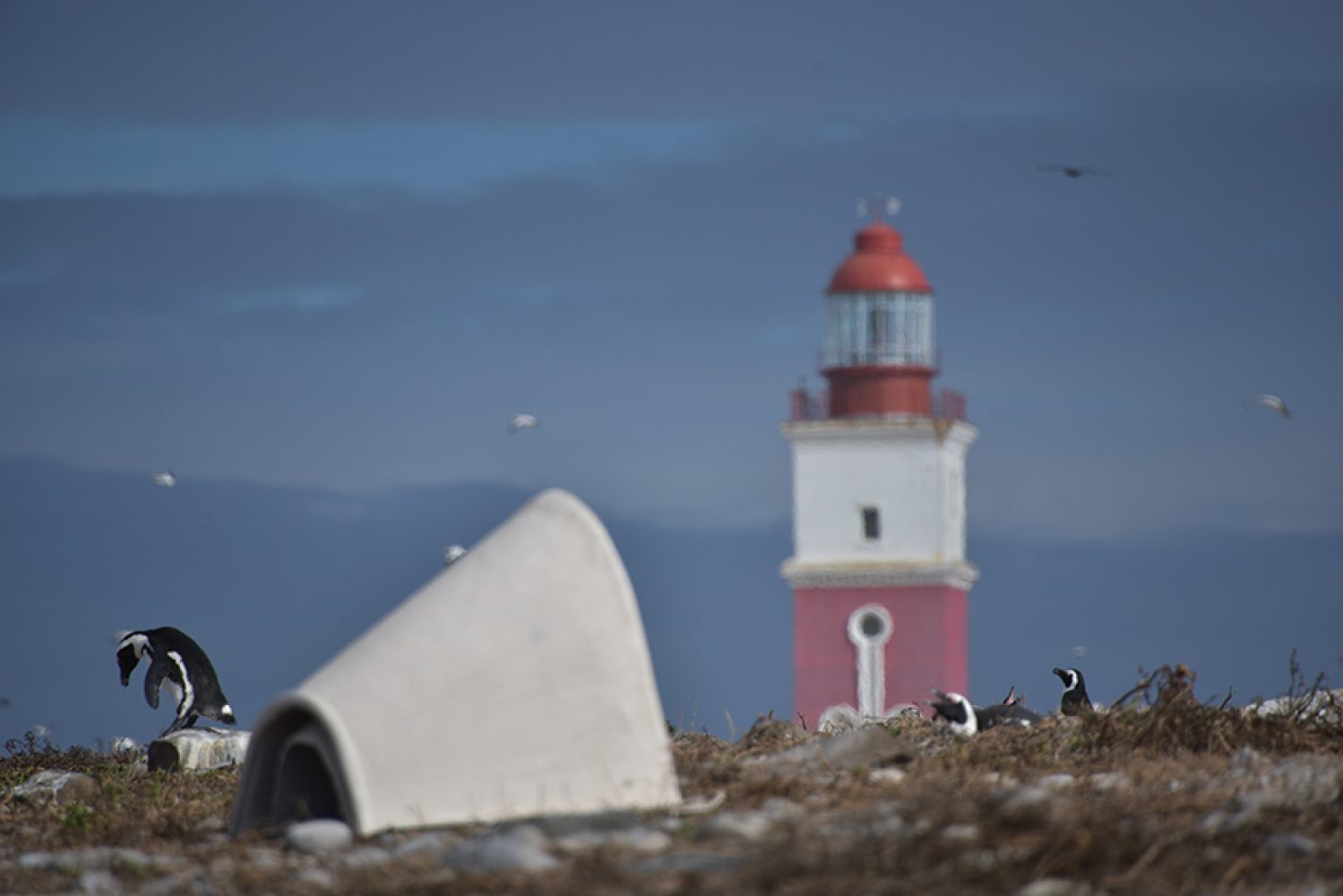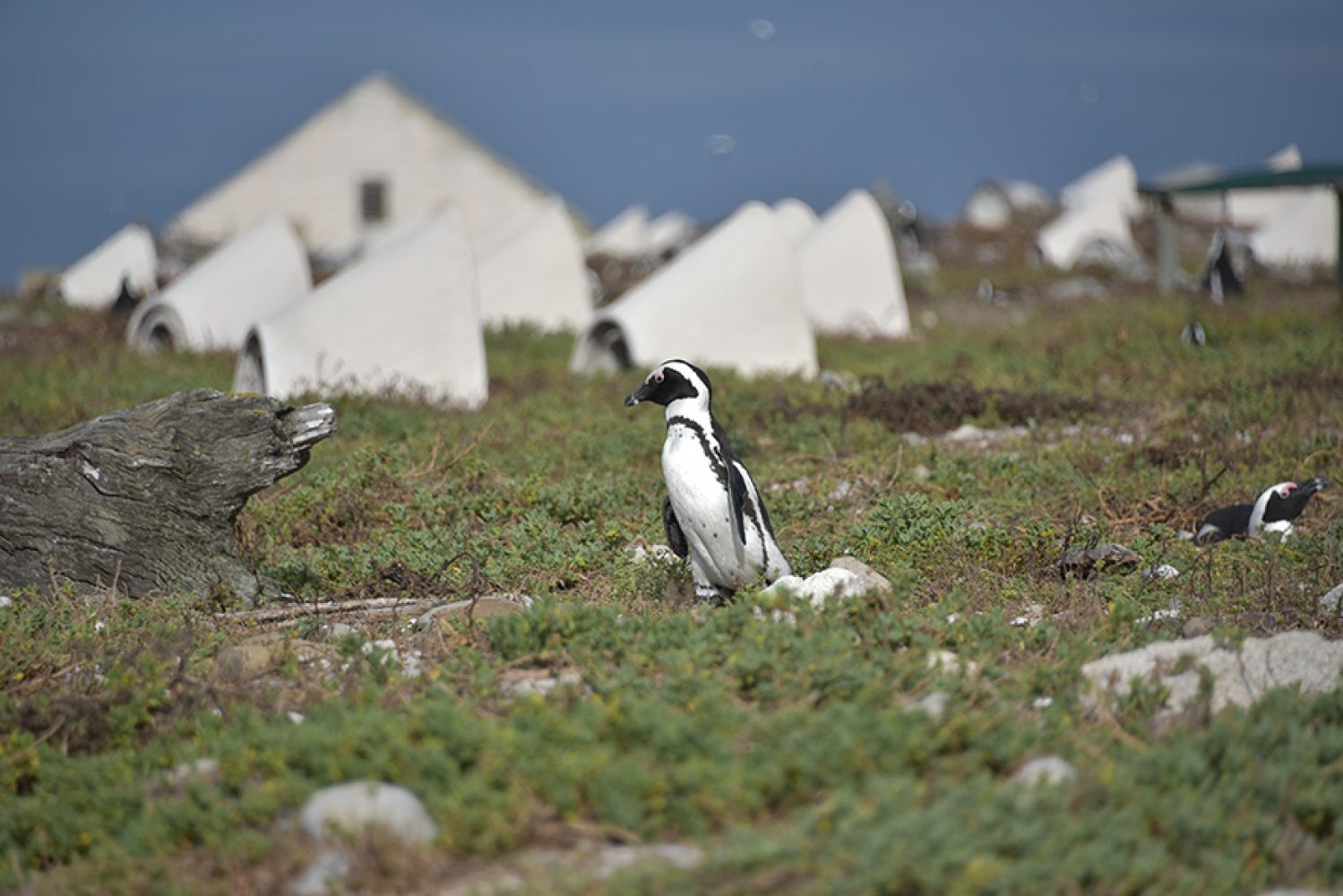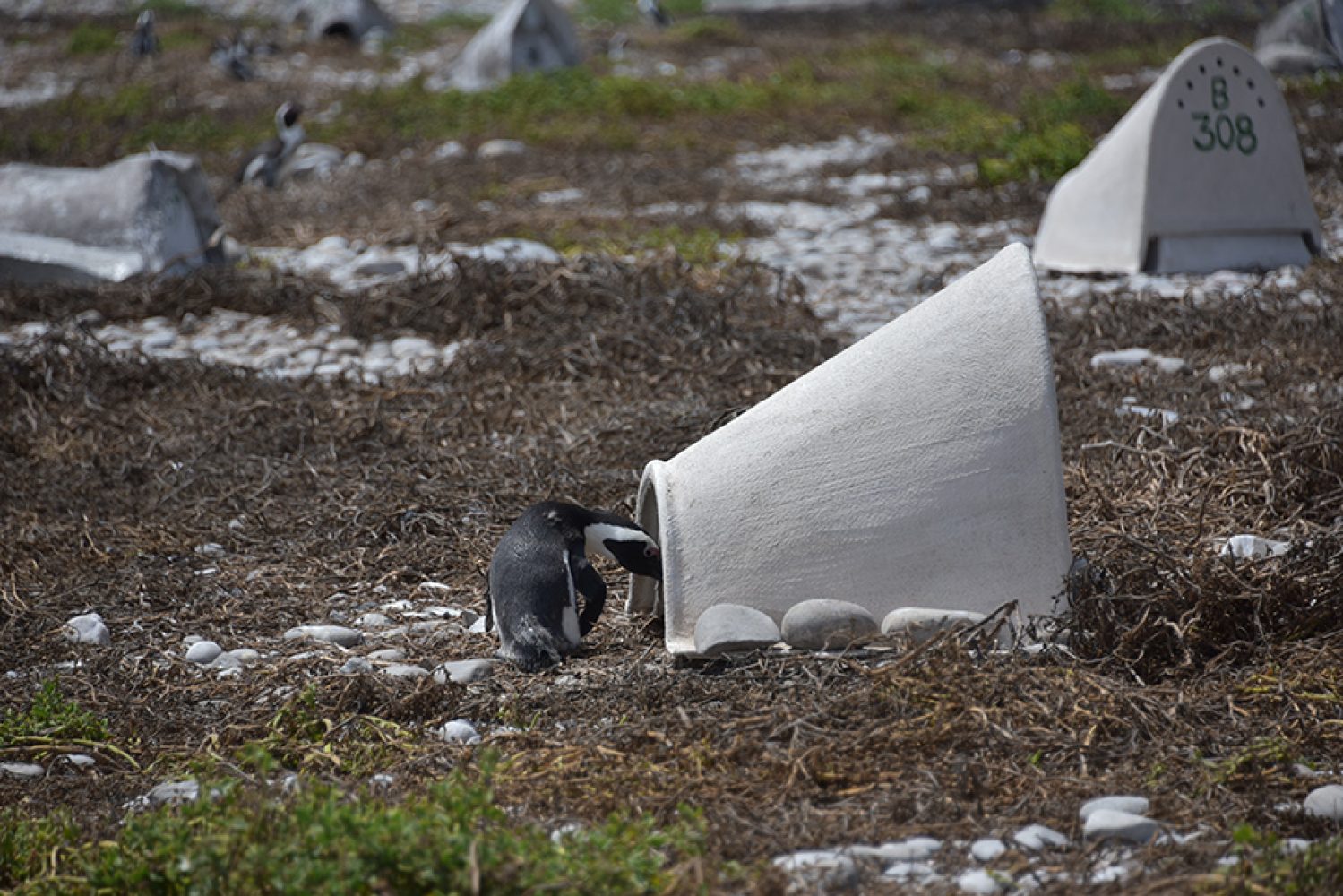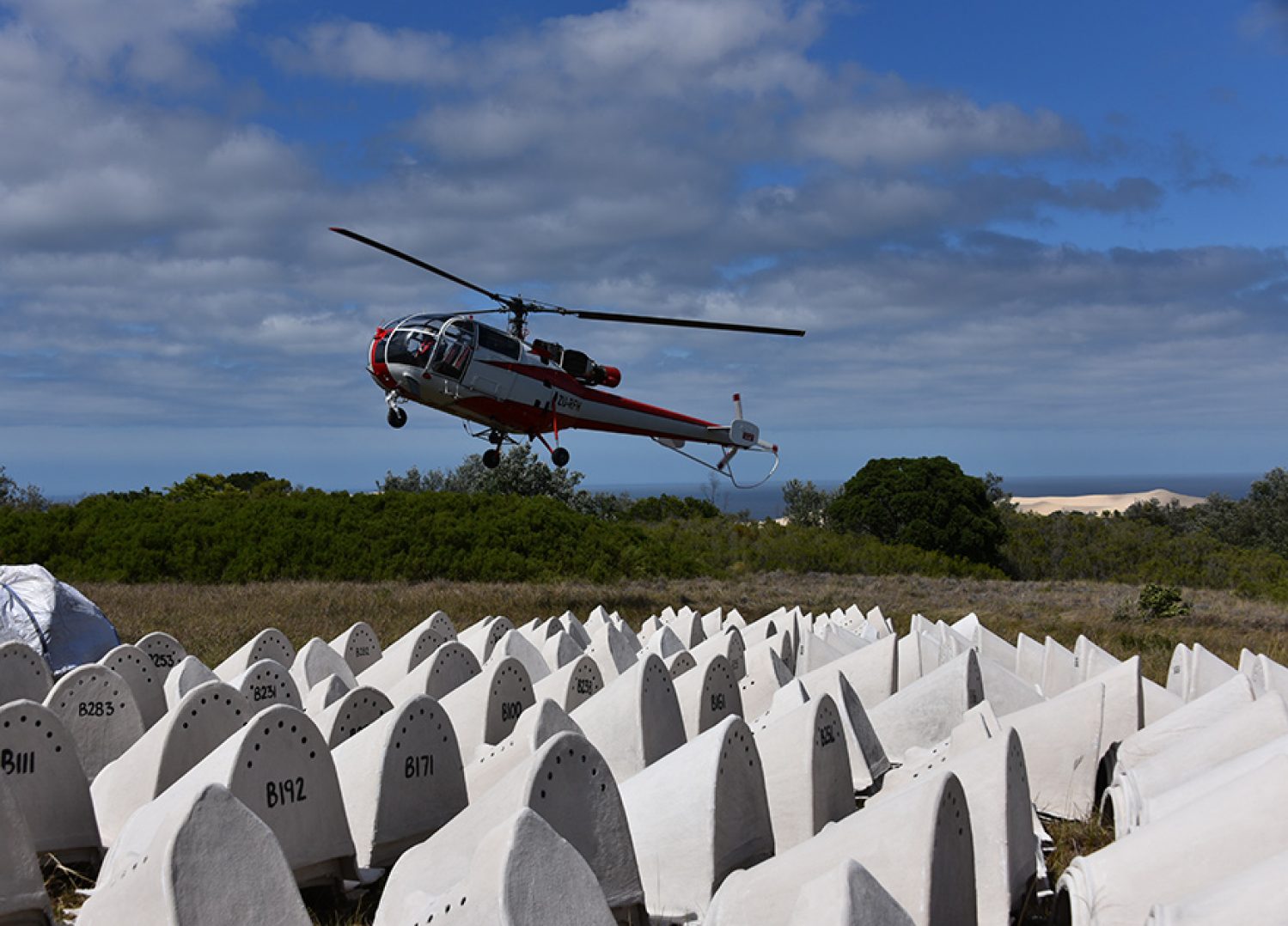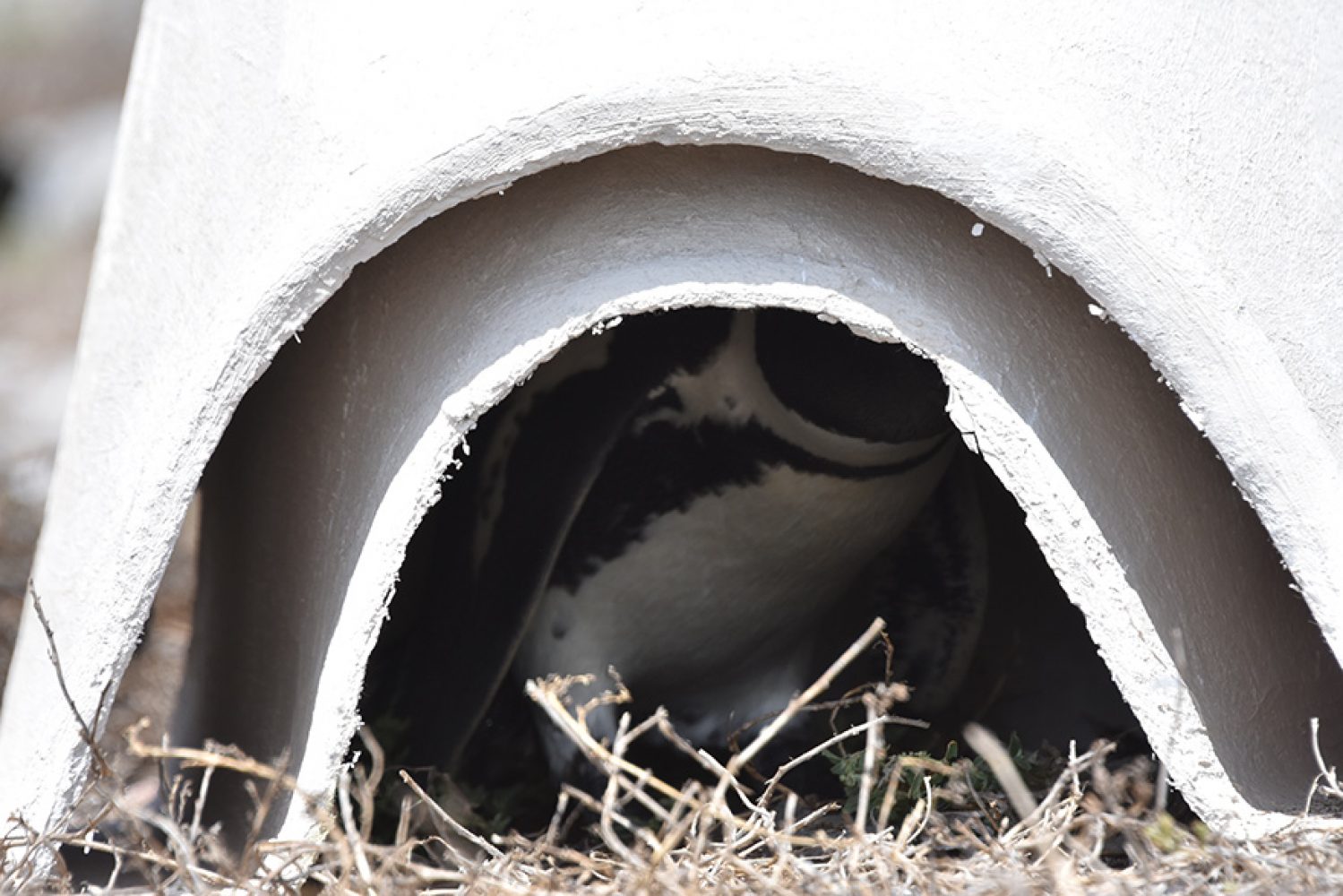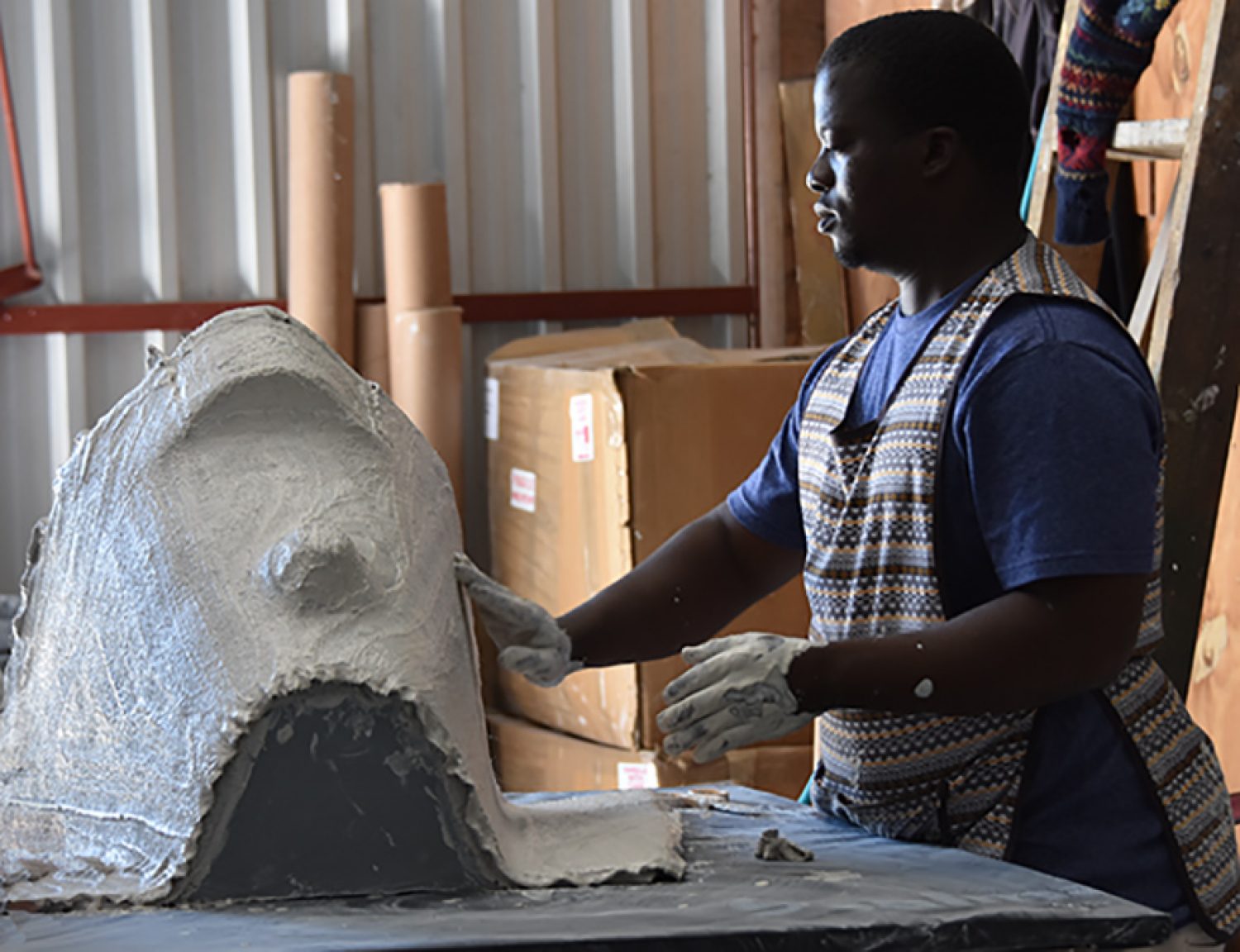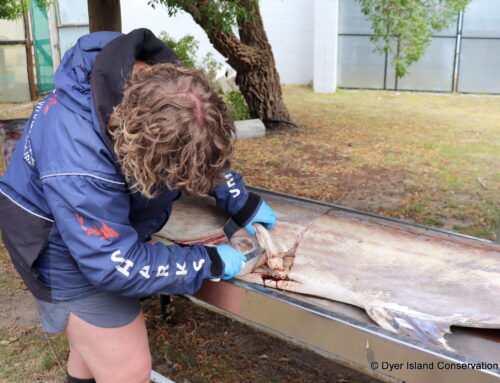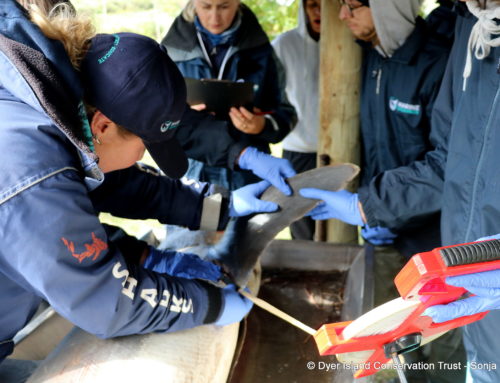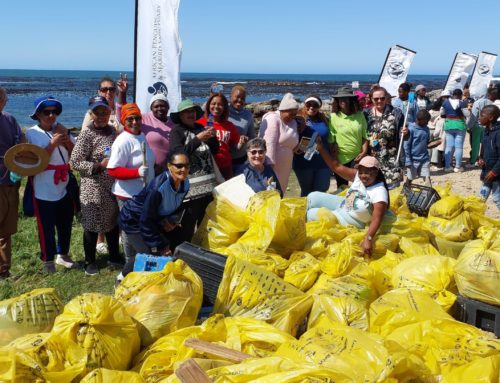April 16, 2019 Dyer Island Conservation Trust
Why are we designing the perfect artificial African penguin nest?
Before the advent of artificially produced fertiliser, guano was considered a top quality fertiliser rich in nitrogen, phosphorous and
potassium. Guano (an Inca word for a mix of eggshell, feathers, decayed corpses and bird excrement) was scraped from the penguin breeding islands. On Dyer Island, the guano layer was between 4-6m deep. Penguins used to build their nests by burrowing into the thick layers of guano. This “forced removal” from well protected, temperature controlled burrows to open surface nests, exposed the African Penguin to the harsh African heat and occasional flooding. The “open-plan” living arrangement turned their eggs and chicks into an easy meal for predators like gulls & skuas.
At the start of the nest / housing project in 2006, the main aim of the artificial nests was to provide protection from predation. The original nests were manufactured from fibre-glass and although the nests addressed the predation problem, research indicated that the nests became too hot inside. Penguins simply abandoned the nest leaving eggs and chicks behind.
Meeting the housing needs of the African penguin started us on the quest for the perfect penguin penthouse. Research told us that the guano burrows provided the penguins with:
• A constant micro-climate
• High relative humidity
• Buffered temperatures
• Little exposure to the wind
• Shelter from rain & predation
We could therefore reach the following conclusions:
• Temperature inside is the nest most important aspect – material must try to mimic conditions of guano burrows.
• Nest size – must be able to accommodate 1 adult & 2 chicks
• The penguins must be able to defend the access to the nest
• Adequate ventilation
• Ideal temperature: 24 – 26oC
• Humidity: 80 – 90%
The nest team spent 3 months rigorously field- testing 15 different nest prototypes, each equipped with high-precision sensors, to
provide us with information about the microclimate conditions inside the various test nests.
The “winning” nest material is a ceramic based slurry. The interior volume of the nest was based on measurements of wild guano nests. The nest entrance mimics the entrance hole of the old guano burrows. The new style penguin penthouses were revealed to the penguin populations of Bird Island in the Eastern Cape and Dyer Island in the Western Cape in February 2018. Continued environmental monitoring proved that the new design meets all the environmental requirements, but ultimately we need to know
that the penguins will successfully breed and raise their chicks in these newly designed penthouses.
We do not aim to save the African penguin from extinction because they are cute waddling comedians on land and the world’s
best underwater flyers. They play a vital role in fertilising the fish nurseries around islands, they are part of the biodiversity of our ocean. The African penguin is an indicator species, their demise should have set off alarm bells.
During the initial testing phase from March 2018 to end of March 2019 the test nests have been recording environmental data every 30 minutes for the entire duration of the study. The original goal of the artificial nest project was to have nests that never exceeded 35°C. With hundreds of thousands of data points already recorded not a single nest has exceeded 33°C at even a single data point. Very few of the nests have exceeded 32°C for more than a handful of data points.
Biological Testing – Do the penguins utilise and breed successfully in the nests?:
The biological monitoring process has yielded more than 4,000 data points. Final analysis of the acquired data is still pending the receipt of the full information packet, however preliminary and incomplete data shows that:
• 96% of the nests that were provided during the in-colony testing were utilized by penguins to some degree. The minimal criteria for
occupancy are the presence of a pair of birds. A single bird with no eggs or chicks is not considered to be an occupied nest for
comparison.
• 81% of the nests that were provided during the in-colony testing had eggs laid in them at some point during the testing process.
• 67% of the nests that had eggs laid in them during the in-colony testing were found to have at least one hatched chick during
observations.
• 57% of the nests that had eggs hatch in them had a minimum of one chick survive to at least P4 stage or beyond.
This is not a conclusive result for the biological monitoring process, which will take a full installation of artificial nests and several years of intensive monitoring to ensure that the data is sufficient for study. However, this limited dataset along with the extensive environmental testing done has shown that the artificial nests have the ability to provide the proper protection from predation and environmental stability required by penguins for successful breeding.
Project partners: The American Zoo Association – SAFE project. The Pan African Association of Zoos and Aquaria. SanParks & CapeNature
From individually hand constructed shells transported to the breeding colonies to be assembled ready for the penguin inspectors, to the perfect, occupied penguin penthouse. That is what we hope to achieve with the African Penguin Artificial Nest Project.


